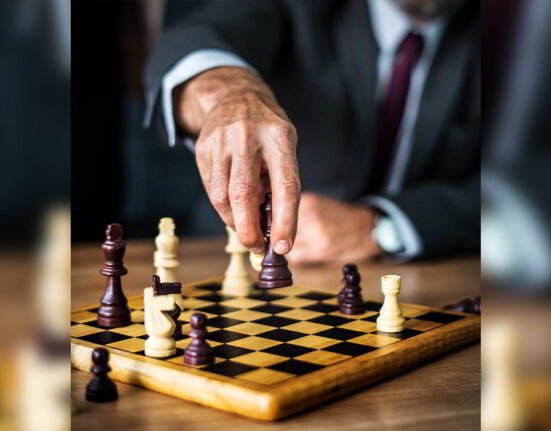In the 21st century life has become way more complicated than before. It became necessary for people to multitask to meet the expectations or task. It’s like being on an active continuously. Even when people are not working they are engaged in planning or in pressure of future performance and competition. In such situations person can feel overwhelmed or become overreactive to the situation. Sometimes such pressure of expectations of doing better at work can lead to anxiety and stress. In this situation person can easily get triggered by small incidents and responses. It can be also possible that a person indulges in past or future-oriented thoughts which makes them feel lethargic and just want to relax. But how to relax as their mind is constantly working or thinking? In such situations, Grounding Exercise can play an important role in making the person relax.
What is a grounding Exercise?
Grounding Exercise is about being in the present by pulling away the thoughts from flashbacks, and negative, unwanted, and challenging emotions. It’s a way to refocus on the present by practicing any grounding techniques. This can help the person to make distance from undesirable emotions at any point in time as it can be practiced anywhere.
Read More: How Can You Cope with Your Stress?
Types of Grounding Exercises-
1) Physical Grounding Exercise-
People who want the immediate impact of this grounding exercise must opt for physical grounding exercises. This stabilizes the physical signs of stress, such as increased heart rate and blood flow.
A few examples of physical grounding exercises:
a) Double inhale, one exhale: In this process person has to inhale and then again inhale as much as he can and then exhale once. Doing this process 3 to 5 times can make you feel relaxed and disconnect negative thoughts or flashbacks.
b) 5, 4,3,2,1 method: In this method person uses his 5 sense modalities for being in the present.
Steps of this method:
- Name 5 objects in detail that you can see without being emotionally engaged. Just observe the object and describe it. (It can be furniture, a wall, a clock, a water bottle, or anything)
- Sense 4 things which you can touch from where you are sitting it can be the sofa on which you are, the pillow in your lap, your shoes, or any around you that you can touch without moving) sitting,
- Hear 3 sounds around you (it can be the noise of the clock, traffic, the sound created by a fan, or anything)
- Two things which you can smell (it can be perfume, smell of food)
- Taste one thing (it can be water, food)
A person has to behave as an observer. If a person finds any step more engaging they can continue that step for a long period of time. The object of this process is to be in that moment not about completing steps.
Read More: From Job Loss to Mental Distress: Unemployment Impacts on Mental Health
c) Feeling your body: In this process person has to feel each part of his body and how it is placed. This can be done by sitting or standing. Detailed scan of full body from head to toe. For example –
- Focus on the head or forehead. Person experience any pressure? Or what exactly do they experience when they focus on their head?
- Weight of shirt on the shoulder
- Their heart rate. Is it slow or fast?
- The stomach seems empty or full
- Feet are touching the floor or not, legs are crossed or open
2) Mental grounding Exercise:
In this exercise person is mentally engaged in overcoming automatic thoughts.
a) Recitation: Reciting something can work for individuals. It can be any quotation, mantra, prayer, or anything that can feel is meaningful to them.
If they are speaking loudly focus on your lips movement and if they are reciting in mind they can create pictures of each work they are saying.
In times of distress, utilize this process to remain connected with reality.
b) Mental Math: people who feel that maths is not their comfort zone can go for this exercise as this Exercise needs more attention for them than people who are good at maths. In this process what they have to do is, do mental calculations and try to find the same number in each answer such as 4+8=12, 18-6=12, 6×2=12.
c) Describing any common task: in this process person has to describe the task that they used to do on daily basis. They must describe it in a way as if they are giving instructions to any person with full details. Such as steps for making coffee, and how to clean a car.
Read More: From Job Loss to Mental Distress: Unemployment Impacts on Mental Health
3) Soothing grounding exercises-
This exercise gives emphasizes touch sensation.
a) Spending time with pets: Spending time with pets can have a healing effect as people hold close bonds with their pets. They can feel the warmth of the body of their pet on their hand and just feel this present moment. They can exchange emotions without saying anything. This process makes them feel better.
b) Visualising your happy moment: Visualising a happy moment in detail can change the physiological signs of stress. As experience of positive emotions can make them feel relaxed.
c) Touch something comforting: it can be a pillow, cushion, soft toy, pet, or sand. Fully embrace the sensation of touch and actively engage in this process.
All these are self-induced exercises. Whenever people feel they want to cut off from negative emotions they can practice any one of them.
However, people are skilled in facing challenges in life. Which means there will be chances of losing self-control. Strong character is not the one who does not fall, strong character is about learning to stand every time they fall. Keeping check of emotions and practicing grounding exercises can help the person to avoid negative experiences in full intensity and helps them focus on daily tasks and performance.













Leave feedback about this